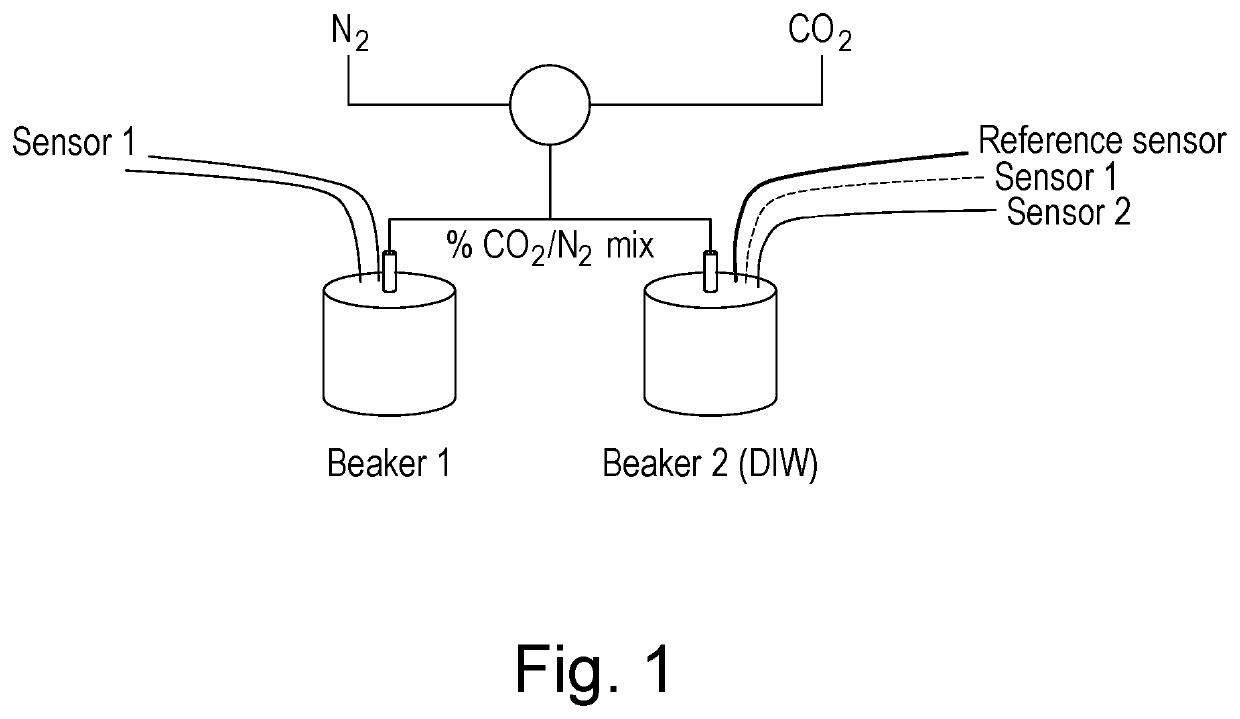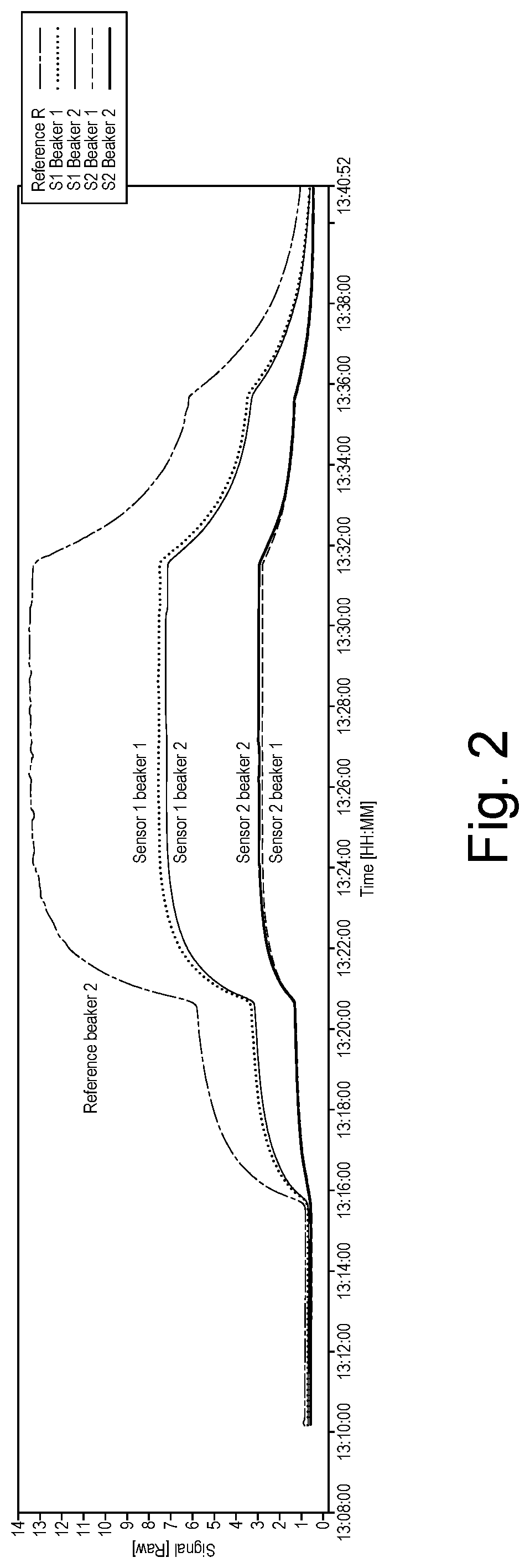Sensor
a sensor and sensor technology, applied in the field of physiological sensors, can solve the problems of liver and kidney severe ischemic without alerting, other organs may become severely ischemic and incur irreversible damage, and the affected tissue may die, etc., to achieve the effect of easy production, easy insertion into the tissue of an animal, and easy removal
- Summary
- Abstract
- Description
- Claims
- Application Information
AI Technical Summary
Benefits of technology
Problems solved by technology
Method used
Image
Examples
example 1
[0076]The experimental set-up shown in FIG. 1 was constructed. A gas mixture of CO2 and N2 was bubbled through diffusers into de-ionised water. The composition of the mixture was controlled by two computer controlled mass flow controllers. Two 40 mL beakers were filled with de-ionised water at ambient temperature. Each beaker contained a gas diffuser and two sensors (one each of type S1 and S2). Beaker 2 also contained a reference sensor. Sensors S1 and S2 comprised of gold stripe electrodes located diametrically opposed on the outside of a cylindrical polymer carrier substrate. S2 electrode spacing approximately 0.7 mm, lengths 5 mm, S1 spacing approximately 1.7 mm, electrode lengths 10 mm. The reference sensor consisted of two 10 mm cylindrical steel electrodes 175 um diameter, suspended 1 mm apart. The sensors were connected to a PC through an analogous digital converter and conditioning electronics.
[0077]The gas mixture composition was varied with time following the sequence O %...
example 2
[0079]The same experiment as described in Example 1 was repeated, except that a 1:1 ratio of AlOH (3.2 mmolL−1) and CuOH (2.5 mmolL−1) were added to Beaker 1 and the gas mixture composition was varied with time following the sequence 0% 6% CO2, 10% CO2, 14% CO2, 20% CO2, 6% CO2 and 0% CO2 over a time CO2, period of 30 minutes and the response of the sensors followed. The Results are shown in FIG. 4. Again, the signal can be seen to increase significantly for Sensors 1 and 2 in Beaker 1 with the metal ions present compared to Sensors 1 and 2 in Beaker 2 which contains only de-ionised water.
example 3
[0080]The effects of changing the metal ion and concentration on the increase in sensitivity were investigated using the same set-up described for Example 1. The results are shown in FIGS. 5 and 6.
[0081]FIG. 5 shows that all of NiOH, AlOH and CuOH give an increase in sensitivity to CO2 measurement when added to de-ionised water, with CuOH showing the highest increase. The concentrations of NiOH, AlOH and CuOH were 2.7 mmolL−1, 3.21 mmolL−1 and 2.56 mmolL−1, respectively.
[0082]FIG. 6 shows that a significant increase in sensitivity is observed for a mixture of CuOH, AlOH and NiOH over a wide concentration range. Mix1 at 0.1% contains NiOH, AlOH and CuOH at concentrations of 10.24 mmolL−1, 12.84 mmolL−1 and 10.8 mmolL−1, respectively. The concentrations were decreased by a factor of two each time, thus Mix1 at 0.05% contains NiOH, AlOH and CuOH at half the concentration of Mix1 at 0.1% and so on.
PUM
| Property | Measurement | Unit |
|---|---|---|
| concentration | aaaaa | aaaaa |
| conductivity | aaaaa | aaaaa |
| pressure | aaaaa | aaaaa |
Abstract
Description
Claims
Application Information
 Login to View More
Login to View More - R&D
- Intellectual Property
- Life Sciences
- Materials
- Tech Scout
- Unparalleled Data Quality
- Higher Quality Content
- 60% Fewer Hallucinations
Browse by: Latest US Patents, China's latest patents, Technical Efficacy Thesaurus, Application Domain, Technology Topic, Popular Technical Reports.
© 2025 PatSnap. All rights reserved.Legal|Privacy policy|Modern Slavery Act Transparency Statement|Sitemap|About US| Contact US: help@patsnap.com



